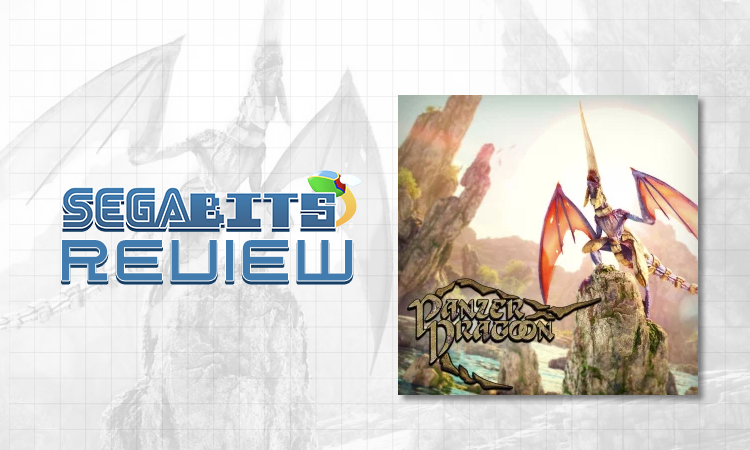
Review code provided by Forever Entertainment.
Remakes are a common sight in the modern age. I won’t spiel too long about their worth, or their reason for being, but I will put a fine point on one aspect of their existence: what they bring to the original game. A remake can do a lot of things, both good and bad, and the discussion for how faithful a remake should be is a relevant one in the face of games that barely do more than make new art and graphical assets being the most successful remakes on the market. A good remake, in my opinion, is one that injects life into an old idea while keeping sight of what made the idea special in the first place. Or, at the very least, doing something so radically different with the original idea it becomes special in its own right.
Enter Panzer Dragoon: Remake. The original was a seminal 1995 release that ushered the SEGA Saturn into American and European homes with aplomb, and delighted Japanese Saturn owners a year into its life. It was a simple game of arcade sensibility with RPG detail. It was a 3D tour-de-force when polygons were a rarity at home. An on-rails action shooter with a three hundred and sixty degree innovation and a world like nothing else at the time. It’s a prime candidate for a remake, old and unique enough that it could stand improvements without becoming part of the crowd. Does the remake we have now succeed, though? Well…
It’s Gorgeous
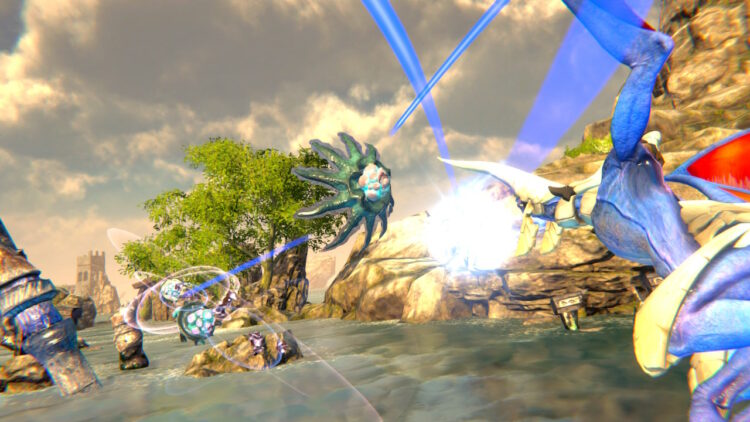
Make no mistake, no matter what I say about the rest of the game, Panzer Dragoon: Remake is as much a visual feast now as the original was back in the day. The art has been immaculately updated, with a clear creative vision for how a modern, high-definition version of the Panzer Dragoon world should look. Models are high detail, materials and textures look real enough to touch, and the art is stunning. The game’s greatest visual strength however, is its lighting, both for direction and for being one of the few departures the game makes to the original.
Nearly every level has a distinctly different mood, atmosphere, and even time of day compared to the original game, and it’s all directed by lighting. Rather than adhere to realistic light, the game opts for strictly artistic lighting, sun and shadow and artificial diodes serving the atmosphere rather than physics. It won’t hold a candle to modern ray-traced or even procedural lighting solutions, but it’s not trying to; this is a more traditional approach to lighting, one intentional and bold, and it wholly pays off in making the game look unique and vibrant and beautiful. The best level aesthetically, and the one that in my opinion benefits most from the lighting changes, is Episode 3. Although it’s not my favorite level (I actually don’t like playing it much for its amount of, in my opinion, cheap shots), it’s the best example of the game’s art direction and is a visual joy.
Animations, however, are a mixed bag. The remade intro cutscene is almost a different yet similar blend of janky compared to the original, featuring unnatural human and creature movements that give a not-so-flattering first impression. The credits similarly give a not-so-flattering last impression, concept art complete with company watermark being pulled back into pixelated mess that got a laugh out of me the first time. However, the dragons animate beautifully with convincing weight, and the bigger the enemy, the better it moves.
It Sounds Just Okay
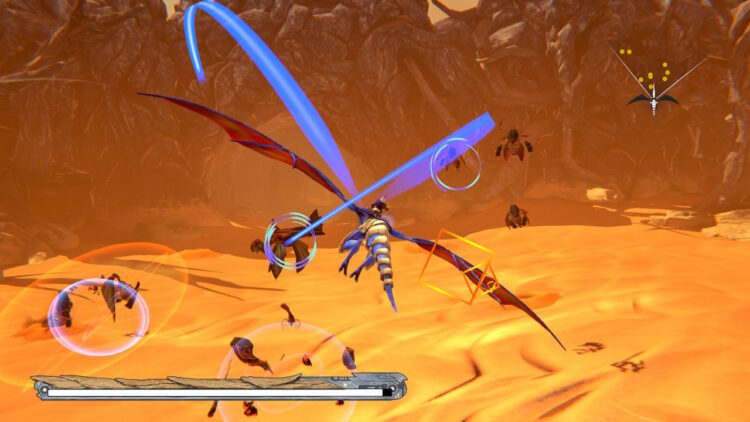
I had apprehensions about the sound design going in. I’m a big proponent for “don’t screw with classic, iconic, memorable sound design.” Even if the sounds might not be objectively very good, high quality, or high production, they’re a big part of the identity of a lot of games. It especially looks bad when the new sound design is worse than the old, as I thought with this remake’s initial showing. However, credit where it’s absolutely due, MegaPixel took feedback honestly and made big improvements to how the remake sounds. Punchy sci-fi blasts, short but ‘pow!’-y explosions, and snappy reticle confirmations give (almost) everything that matters sharp feedback.
It’s a shame then, that the sound mix is so muddy and that much of the design is simply bland. The original had no problem making every sound stand out among the ambience and music and lasers, but even playing the update release today, it’s a mess. In the launch game, the music dominated the soundscape so much in that everything else fell to the wayside besides critical player feedback. I thought it was good that that was prioritized, and that is still the case, the issue isn’t that the detail is missing, some of it is even very good, you just can’t hear it. Creature moans, waves crashing, wind roaring, in the launch version it was all completely inaudible with music on, but now laser blasts and explosions and impacts dominate the soundscape so much it becomes a pain to the ears. It drowns out the music, too, and even worse, it obscures the “I’m invisible” sound that was added in the same update! So far, the sound mix is simply a hot mess. I recommend turning sound effects down to about half to make it at least mildly listenable.
On top of all this, some things are changed needlessly and for the worse. The big example is the dragon’s laser, a sound which carried through all four installments was replaced with something less bassy, less powerful, and frankly, less cool in the launch version. In the updated game, it is surely more powerful, but it’s still nowhere near as good as the original. It breaks my cardinal rule; something iconic, memorable, and intrinsic to the series has been replaced with something far inferior. A complete shame.
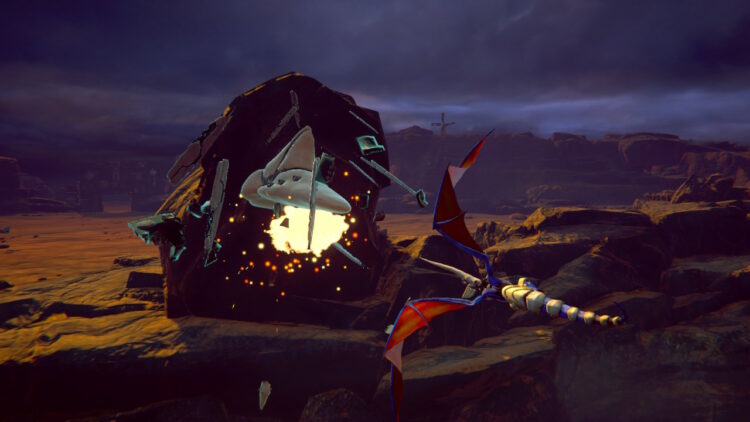
Finally, there’s the music. The original Panzer Dragoon’s score, by Yoshitaka Azuma, is undeniably classic. It was one of the first games to use a proper orchestral sound on the disc (earlier radio broadcast games featured live orchestra), and those pieces remain some of the most memorable. When it’s not orchestrated, it’s thumping synth bass, hard percussion, and sharp woodwinds. Some synthesized elements don’t hold up as well, and not every track is very memorable, but all draw a cohesive aural picture. At the very least, it’s all appropriate and high quality.
New to the remake, though, is a completely new, from-scratch redone soundtrack by Panzer Dragoon veteran herself, Saori Kobayashi. Composer of Panzer Dragoon Saga (the RPG game that commands thousands of dollars online) and Panzer Dragoon Orta (the best rail-shooter of all time, fight me), her soundtrack is…different. Different but…extremely, extremely good. Kobayashi does not adhere strictly to all of Yoshitaka Azuma’s notes, instead keeping the melodies but inventing new sound and progressions for them. Nowhere is this more immediately evident than the title screen music; in the original it’s a bombastic, exciting piece that pumps you up to shoot some dragon laser beams. Kobayashi’s interpretation, however, is more slow, mysterious, and low-key. It speaks more to the world of Panzer Dragoon than the gameplay. The rest of her score is also excellent, with some fantastic mixing, thumping electronica, and more even hints of orchestra-like sound throughout. It may not replace the original, but it wasn’t trying to. It’s certainly more memorable throughout, I’ll say that much.
It’s Perhaps Too Samey
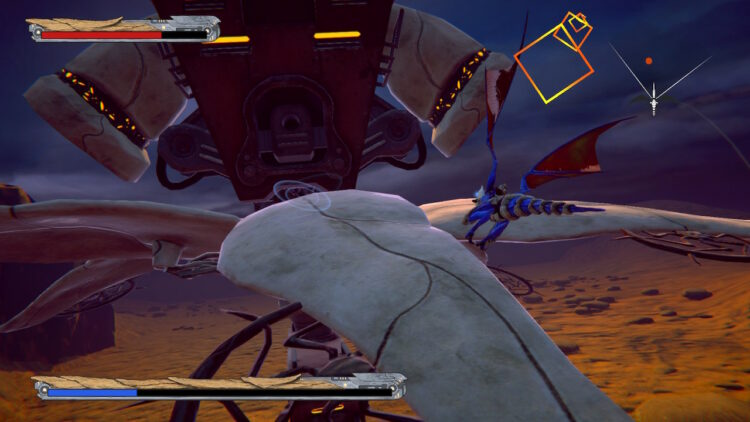
Do you like the original Panzer Dragoon’s gameplay? Well, you’re in luck, because the remake preserves it nearly 100%…almost to a fault. If you enjoy games from 1995, then you’ll feel right at home with this, as it goes out of its way to preserve everything good and everything bad about games from that era. It’s actually impressive, how much painstaking work has gone into making everything work just like it used to. Every little presentational hiccup, every cheap 90’s hit, every unsmoothened piece of game design is right here, presented as gloriously as the graphics.
I can’t even say it’s a negative. As someone who dearly values game preservation, and in lieu of a proper port of the original game (outside of an unlock in Panzer Dragoon Orta on the Xbox One), I find it admirable that effort has been taken to keep it so pure. There’s certainly something to be said for this style of remake, going even further than recent remakes as mentioned at the top of the review. Even those tidy up small bits and pieces of poorly aged design and minor frustrations with changes and occasional bits of modern flourish. This one opted to recreate those flaws, that poorly aged design.
The question, for me at least, is not if this is a good choice, but if it’s the right choice. I don’t really have the answer. That’s something for MegaPixel to decide.
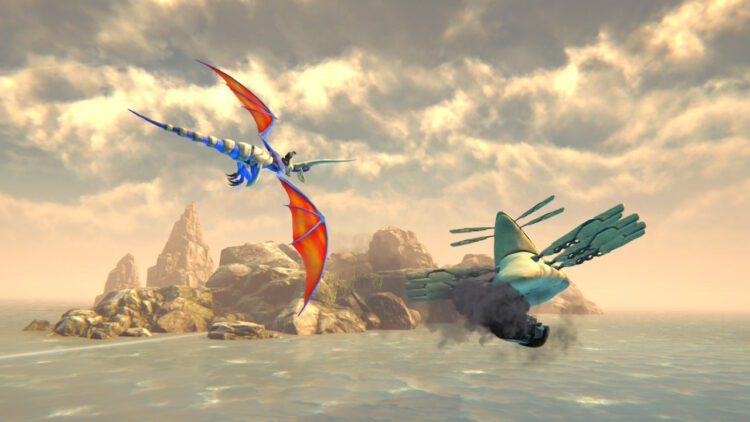
What is completely new here is a mixed bag. Some levels get minor changes to their flow, especially the first level, bosses now have names, some cutscenes are a little different, nothing too drastic so far. There is a photo mode, which I’ve used for some of the screenshots in this review, and it’s serviceable. Some filters, even panning and rotation, it’s alright. Some good stuff can be made with it, though the nature of the gameplay means it’s harder to take full advantage of than in other games.
I’ve already gushed about Kobayashi’s new take on the soundtrack, how wonderful it is and how I’m absolutely going to either buy it if it comes out or download a rip of it as soon as possible. There are, however, two more major additions, one of which is an idea reminiscent of other games, the other is brand new to the series; the unlockable Shadow Menu, and a new, “modern” control input method. The Shadow Menu is a sort of cheat menu unlocked for completing hard difficulty (not the easiest feat out there), and it’s an alright reward. I’d prefer it be unlocked for completing normal, but the old-school difficulty as is preserved here makes it fit. The other new thing is the “modern” controls, which I’ll talk about more later, but to put it simply: it’s a curiosity at best.
It Has Control Issues
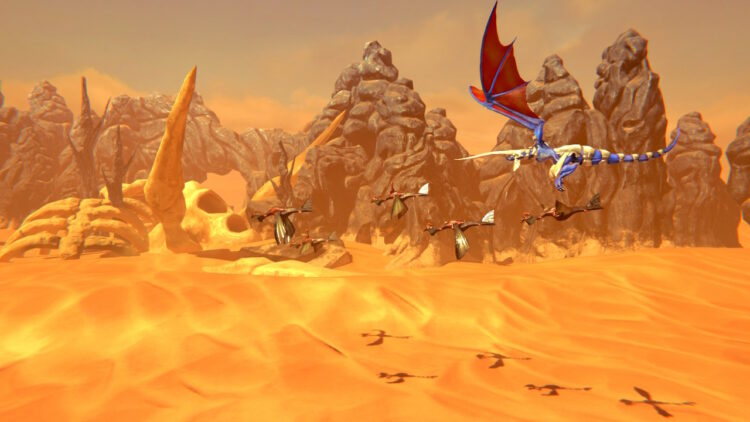
The rail shooter is a tricky genre to fit onto a game pad, whether it have only a directional pad or a full analog stick. Moving a cursor on screen isn’t as fun as aiming a real (plastic) gun, after all. The solution, as given by 1993’s Star Fox, was to make a ship move with the crosshair. Now you’re not moving an abstract crosshair on the screen, you’re moving your character, their body and their aim. Panzer Dragoon uses almost an identical setup to Star Fox, albeit with the addition of a full three hundred sixty degrees of rotation around the dragon and protagonist. The series gradually got better and better at making moving a crosshair around feel fun, and though this remake stumbles in this regard, there’s still good and fun to be had.
I had issues with maneuvering at first, some of which didn’t go away. The original game also takes getting used to, and again, commendation for the effort at recreation, this game takes getting used to in the same way. At first, I thought the game had unbelievable analog acceleration making the crosshair move without my input. Later, I realized this was because the camera moves if the reticle is near the left or right of the screen when not aiming forward. Aiming also felt twitchy and lagged at first, but this also became easier with time. It’s still a tad twitchy for my liking, but it feels fine as you play more. Worse than that is the slight delay on rotating the camera, and the inability to rotate it one hundred eighty degrees when looking left or right. This wasn’t a feature in the original either, but if there was anything to bring in from later games to here, it would be that. On the opposite end of that, the best part of the control is the dragon–this is by far the best the dragon has felt to move in the series. Really can’t stress enough, it’s weighty, but not too slow, and the flap of its wings heavy and purposeful. It’s fun just to toss the reticle all over the place to make the dragon reach the borders of the screen!
As mentioned above, there is a new, alternate control scheme available that not only features different bindings, but a feature new to the series; the decoupling of the reticle from the dragon. This, however, isn’t worth more than a curiosity in my opinion. The design of this game forces you to weigh moving in for a shot vs. the possibility of taking damage. If you can just park the crosshair on the boss’s hitbox and then do all the dodging, you kill the difficulty and design. I’m not wholly against this kind of design, it just doesn’t belong in a game fit to purpose for moving the crosshair and character at the same time. On top of that, it’s a bit awkward to use, and the game doesn’t allow rebinding the incredibly uncomfortable shoulder buttons for anything else.
It’s Fun Ol’ Panzer Dragoon
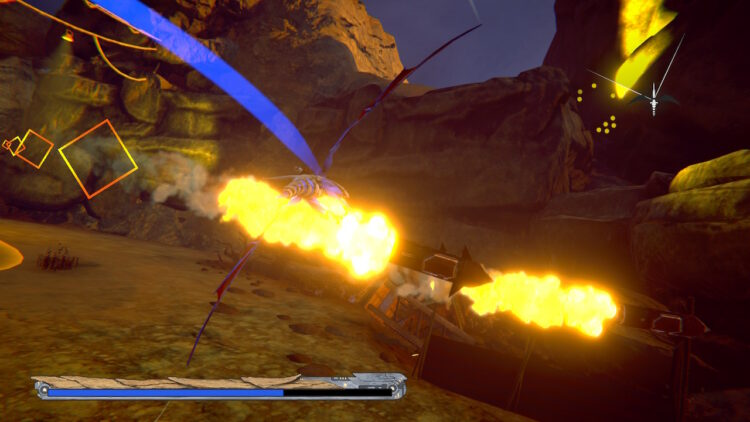
At the end of the day, this is what probably matters most; this is Panzer Dragoon with better graphics. It’s not the best game in the series, still too basic to get a whole lot out of it, but its core is still shining through. It’s a good game, and playing this game at something higher than twenty frames per second is enough to sell me on it, so yeah, you like rail shooters and haven’t played it? Go for it. It’s cheaper than a Saturn and a copy of the original.
Of course, the question that really matters is–is it a good remake? That’s hard to answer, I still deeply respect the decision to preserve as much of the original game as possible, flaws and all, but in my opinion it offers too little to definitively replace the original or sit alongside it. For me, it’s on par with the Japan-only SEGA AGES 2500 release from 2007. It’s a competent update with some jank, and I really do like the new artistic direction MegaPixel took to the game, it just needs refinement. It’s a step in the right direction, it’s a step towards putting Panzer Dragoon back into the limelight, and it’s a positive step for SEGA’s initiative to honor its back catalog of IPs.
Hopefully, it’s not the last step. I’m optimistic for what comes next, especially since the basis for the next remake will be far more refined and fun…
Positive:
- Gameplay is preserved, as fun as always
- Art and lighting is gorgeous
- Best dragon flight in the series (REALLY can’t stress enough how fun it is)
- New Kobayashi soundtrack is excellent
Negative:
- Gameplay is preserved, including all the bad stuff
- Sound and control issues hold it back
- Extremely thin on new content and replay value beyond score improvement
 “Its heart’s in the right place.”
“Its heart’s in the right place.”Ad:


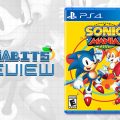



I think this is all very fair. I loved my time with the game and certainly don’t regret my purchase, but I really hope with Zwei the team over at MegaPixel not only improve on the control and such but also expand a bit on the original somehow.
Ultimately my hope is that these remakes sell to the extent that Sega starts to seriously consider doing more with the franchise, either in the form of new games or a Saga remake. Honestly, I’d love to see an FF7 Remake approach to that game in particular. Not necessarily the episodic element of it, but taking an old experience and rebuilding it from the ground up to be new.
And as far as a new game goes… picture this, open-world action rpg Panzer Dragoon. Eh? Eeeeeeh?! I’m just sayin’!
I just want that Mega Panzer Dragoon Saga remake WOW 4 discs👍
What is this sites refusal to review Shenmue 3 all about? Isn’t this meant to be the best SEGA site out there?
I’ll address this. We have never refused to review the game. We received a review copy after release, which occurred during Thanksgiving week. From there we rolled right into December and work and the holidays ate into much of our time, not to mention we had three year in review videos to produce. We then learned of the updates and DLC, leading to the decision that once one of us has completed the game, we will review the game properly. The release window has passed, and those who wanted to play the game should have by now. If our opinion on games are that important to you, I’d think you would be a lot more respectful in asking for our opinions.
Typically I’d ignore an insulting comment like this, which is unrelated to the review posted here and frankly insulting to Moody’s efforts, but I thought I’d put the case to rest. Any additional replies will be deleted.
I think they could’ve done better with the visuals. Not the art, but the graphics. The draw-in is especially distracting since the horizon gets drawn in and out depending on how you move. Hell, ‘Orta’ on the original Xbox (not running on the Xbox One X) still looks better than this remake.
I was all set to get the physical version, but I don’t feel like they went far enough, and it bothers me that Zwei is a separate release because of these games’ length in contrast to their retail price. Now, I’m torn because I don’t have nostalgia for the original release either.
Same. No Nostalgia for the originals even though I own them by the time I booted them it had been decades since the game came out and it looked to dated to play.
My biggest criticism is the tints applied. The waterlevel has a blue tint, the dessert an orange tint and the forest mountains have a green tint. To me it just screams that the white balance is off, the original game did not do this and I wish their was away to color correct the game cause I can’t stand it.
Anyway, don’t own a switch hopefully the trilogy sells enough for a proper enhanced build of the trilogy to be released as a compilation on PS5/XX
I would not consider this a remake of the original but a rework of the original.
And this review here sounds the most promising, though many other people who expected better and were disappointed with it have already voiced their views on it and say it does not play as well as the Sega Saturn original.
Theree are many issues with the slow controls, bobbing dragon animation, oversized dragon because it takes up too much screen space and the overlapping rectical ect. ‘The Southern Sega Gentleman’ (SSG) of YouTube and Facebook in particular has gone into these details in more depth and also highlighted Sega’s unwillingness to bother with the IP, not even for the 25th anniversary of Panzer Dragoon just earlier last month, opting instead to put up a Mar10 (March 10th) anniversary for Super Mario – a mascot of another rival company – Nintendo, on Sega’s own official Twitter page, says it all, in that sense.
Are you kidding me??? What the hell Sega!
given the recent news of Panzer Dragoon 2 Zwei remake , could we get an Update to this review as much of it is based on the vanilla release and not the updated and fixed version , that to their credit , Forever Entertainment listened to fans and used the feedback to correct many issues and even add a 60fps performance mode.
I speed read the review so if I missed anything , then disregard. but it needs to be said, this first remake or rework is great. I went back and played it with the updates and it was exhilarating experience.
ya know, I havent played the classic since I did at my friend’s house in the 90s. this gave me that similar feeling, that spirit of Sega. and the addition of the classic soundtrack is outstanding.